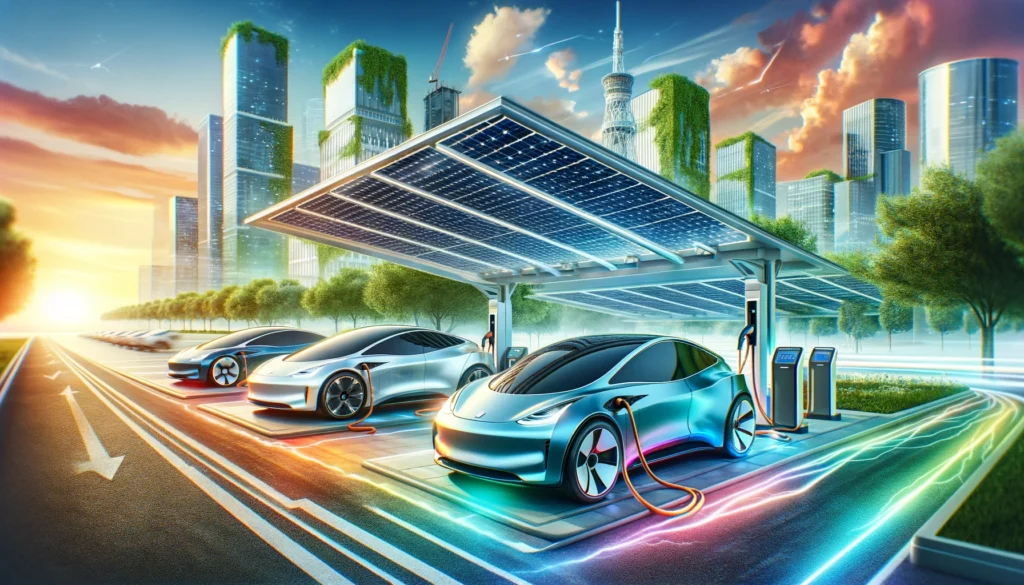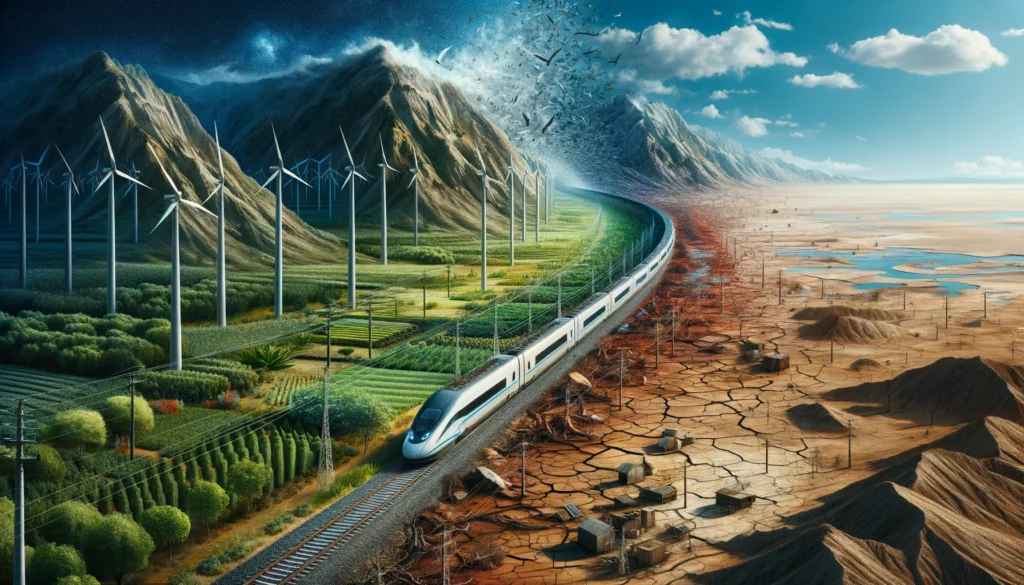Climate change is one of the most pressing issues of our time, with its impacts being felt across the globe. Among the various sectors contributing to climate change, transportation is a significant contributor to greenhouse gas emissions. As the world seeks solutions to mitigate climate change, the future of energy transportation becomes a crucial focus. This article explores the intersection of climate change and energy transportation, discussing current challenges, emerging technologies, and potential solutions.
Table of Contents

The Impact of Transportation on Climate Change
Transportation accounts for a substantial portion of global greenhouse gas emissions, primarily through the combustion of fossil fuels such as gasoline and diesel in cars, trucks, ships, and airplanes. According to the International Energy Agency (IEA), the transportation sector is responsible for approximately 24% of global energy-related CO2 emissions. This heavy reliance on fossil fuels not only contributes to climate change but also leads to air pollution and other environmental issues.
Challenges in Energy Transportation
Several challenges hinder the transition to cleaner energy transportation:
- Infrastructure: The existing infrastructure for transportation, including refueling stations and charging infrastructure for electric vehicles (EVs), is insufficient to support widespread adoption of alternative energy sources.
- Cost: The initial cost of purchasing electric or hydrogen fuel cell vehicles is often higher than traditional internal combustion engine vehicles, making them less accessible to many consumers.
- Range Anxiety: Concerns about the limited range of electric vehicles and the availability of charging stations contribute to consumer reluctance to adopt cleaner transportation options.
- Technological Limitations: Despite advancements in battery technology, energy density and charging times remain significant limitations for electric vehicles, especially in heavy-duty transportation like aviation and shipping.
Emerging Technologies in Energy Transportation
Despite these challenges, several emerging technologies show promise in revolutionizing energy transportation:
- Electric Vehicles (EVs): EVs have gained significant traction in recent years, with advancements in battery technology leading to increased range and improved performance. Companies like Tesla have played a key role in popularizing EVs, and major automakers are now investing heavily in electric vehicle development.
- Hydrogen Fuel Cell Vehicles: Hydrogen fuel cell vehicles use hydrogen gas to generate electricity, producing only water vapor as a byproduct. While still in the early stages of development, hydrogen fuel cell technology has the potential to provide long-range and quick refueling capabilities, making it suitable for various transportation applications.
- Biofuels: Biofuels, such as ethanol and biodiesel, are derived from renewable sources such as corn, sugarcane, and algae. These fuels offer a lower carbon footprint compared to traditional fossil fuels and can be used in existing internal combustion engines with minimal modifications.
- Renewable Energy Integration: Integrating renewable energy sources such as solar and wind power into transportation infrastructure can further reduce carbon emissions. Electric vehicles charged with renewable energy offer a zero-emission alternative to traditional gasoline-powered vehicles.

Policy and Regulatory Measures
Policy and regulatory measures play a crucial role in driving the transition to cleaner energy transportation:
- Fuel Efficiency Standards: Implementing stringent fuel efficiency standards incentivizes automakers to produce vehicles with lower emissions and higher fuel efficiency.
- Subsidies and Incentives: Government subsidies and incentives for electric vehicles, such as tax credits and rebates, can help offset the higher upfront costs and encourage consumer adoption.
- Infrastructure Investment: Investing in charging infrastructure for electric vehicles and hydrogen refueling stations is essential to support the widespread adoption of cleaner transportation technologies.
- Carbon Pricing: Implementing carbon pricing mechanisms, such as carbon taxes or cap-and-trade systems, can internalize the cost of carbon emissions and incentivize investment in cleaner transportation alternatives.
The Role of Public Awareness and Education
Public awareness and education are essential in driving the transition to cleaner energy transportation:
- Consumer Education: Educating consumers about the environmental benefits and cost savings associated with cleaner transportation options can help overcome barriers to adoption.
- Promotion of Sustainable Transportation: Encouraging alternative modes of transportation such as public transit, biking, and walking can reduce the reliance on single-occupancy vehicles and mitigate carbon emissions.
- Partnerships and Collaboration: Collaboration between governments, industries, and environmental organizations is vital in advancing research and development efforts and scaling up the adoption of cleaner transportation technologies.
Conclusion
The future of energy transportation is intricately linked to efforts to combat climate change. Transitioning to cleaner transportation technologies is essential to reducing greenhouse gas emissions, mitigating air pollution, and creating a more sustainable future. While significant challenges remain, emerging technologies, policy measures, and public awareness efforts offer hope for a transition to a low-carbon transportation system. By embracing innovation and collaboration, we can pave the way for a greener and more sustainable future for generations to come.

FAQs
What is the impact of transportation on climate change?
Transportation contributes significantly to greenhouse gas emissions, primarily through the combustion of fossil fuels in vehicles, leading to climate change and environmental degradation.
What are the challenges in energy transportation?
Challenges include inadequate infrastructure, high costs of alternative energy vehicles, range anxiety, and technological limitations in battery technology and renewable energy integration.
What are some emerging technologies in energy transportation?
Emerging technologies include electric vehicles (EVs), hydrogen fuel cell vehicles, biofuels, and the integration of renewable energy sources into transportation infrastructure.
What policy measures can support the transition to cleaner energy transportation?
Policy measures such as fuel efficiency standards, subsidies for alternative energy vehicles, infrastructure investment, and carbon pricing mechanisms can incentivize the adoption of cleaner transportation technologies.
How can public awareness and education contribute to the transition to cleaner energy transportation?
Public awareness and education efforts can promote the environmental benefits and cost savings associated with cleaner transportation options, encourage sustainable transportation practices, and foster collaboration between stakeholders.
You May Also Like
- YOUTH ACTIVISM AND CLIMATE CHANGE: THE POWER OF THE NEXT GENERATION
- GREEN TRANSPORTATION: REDUCING EMISSIONS AND COMBATTING CLIMATE CHANGE
- RENEWABLE ENERGY IN THE TRANSPORTATION SECTOR: ELECTRIFYING THE FUTURE
- DRIVING CHANGE: HOW GREEN ENERGY IS TRANSFORMING THE TRANSPORTATION SECTOR
- THE FUTURE OF TRANSPORTATION: ELECTRIFICATION AND SUSTAINABLE MOBILITY
External Links
- FUTURE OF MOBILITY: WHAT’S DRIVING INDIA’S PUSH TOWARDS EVS
- What are the current and emerging trends in transportation electrification and renewable energy sources?
- What are the current and emerging trends in transportation electrification and renewable energy sources?
- Charging into the future: the transition to electric vehicles
